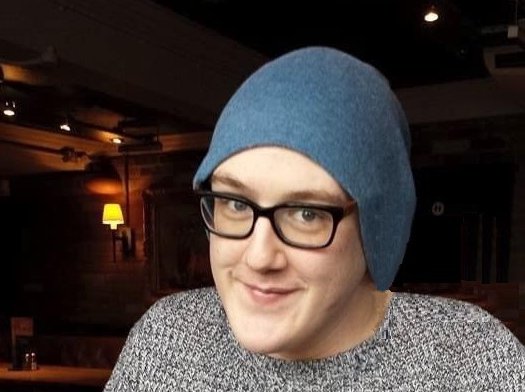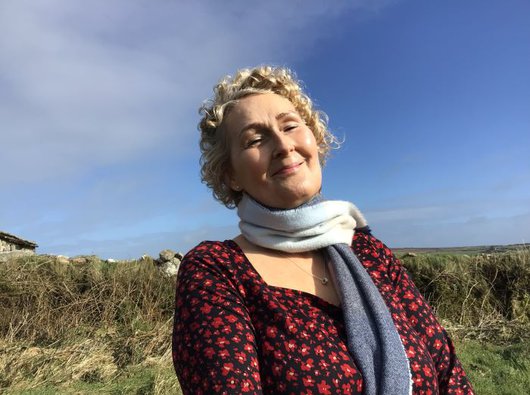Acute myeloid leukaemia (AML) prognosis
After you’ve been diagnosed with AML, you may want to know more about your prognosis - what's likely to happen in the future. There are lots of things that can affect your prognosis.
What's the prognosis for acute myeloid leukaemia (AML)?
It’s best to ask your healthcare team about your prognosis if you want to know about it, because they know your individual situation.
When you are diagnosed, and any time during your treatment, your doctor can tell you what the aim of your treatment is:
- For many people, the aim is to get rid of the leukaemia completely. This requires strong treatment and takes some time, but for many people the treatment is successful and they are cured.
- For other people, the treatment doesn't manage to completely get rid of the leukaemia. The aim of treatment might then become to control the AML and your symptoms for as long as possible.
- People who are older, who have other serious underlying heath issues, or who are generally frail may not be able to have treatment that could cure the AML.
If you aren't clear what the aim of your treatment is, ask your doctor.
Whatever stage you're at, we are here to support you through it - contact our Support Service if you have any questions or worries about prognosis.
"Don't Google! That will add to the fear. Use trustworthy sources like Blood Cancer UK, and write down any questions you still have for your doctor."
Josh, diagnosed with AML in 2015.

Everyone's prognosis is individual
There are lots of different things that can affect your prognosis, like your age, your general fitness, and the specific type of AML you have. But putting them all together to give an idea of your individual prognosis is very complicated, and something only your doctor can do.
Even after taking everything into account, the information your healthcare team gives you will still be quite general. It will be based on what’s happened to people similar to you, but people can still have quite different experiences.
Your prognosis can also change as you go through treatment. For example, some people that are given a poor prognosis at first might do well on treatment and their outlook could get better.
Survival statistics for AML
People often want to know about survival rates for acute myeloid leukaemia. Survival rates are statistics that show how many people in a large group survive AML for a certain period of time. They often tell you how many people survive at least 5 years after diagnosis. This is a common way of measuring cancer survival, and it doesn't mean these people only survive 5 years - many people survive longer than this.
Survival statistics are only averages - they can give a rough picture of what happens to large groups of people with AML, but they can't say exactly what will happen to you, as nobody can know that. This is why so many people with AML find survival rates unhelpful to focus on.
You might find it difficult understanding or thinking about prognosis. Our Support Service is here to talk you through it, offer support, or simply listen.
Below we explain the main things that affect your prognosis.
Your general fitness and ability to have high-intensity treatments
Your level of general health and fitness when you are diagnosed with AML does affect prognosis. If you are generally quite well, then you are more likely to be able to have high-intensity treatment, which gives the best chance of a cure. If you are older, more frail, or have other health conditions, you might not be able to have high-intensity treatment, and you might need to have low-intensity treatment instead.
Often (but not always) people who are younger are generally fitter and more able to cope with high-intensity treatments, and therefore have better outcomes. But this doesn’t mean that someone older can’t have a good outcome – it depends on your personal level of fitness and how you respond to treatment.
Genetic mutations in AML cells
There are many different genetic changes that can happen inside AML cells. Some of these are linked with less good outcomes, and others are linked with better outcomes.
Remember, these are not genetic mutations that are inherited or passed on to children – they are mutations that happen randomly in your blood cells during your lifetime, and cause AML. AML can sometimes be linked to an inherited genetic mutation, but this is rare.
It’s also important to realise that while genetic mutations play a part in prognosis, it is the overall picture of many different things that helps determine prognosis, rather than individual mutations.
When a genetic mutation is linked to a less good prognosis, this is mainly because of the increased risk of relapse in the future (the AML coming back). But this helps guide treatment decisions, because there are treatments that can be used to reduce the risk of relapse. As well as this, there are now some treatments that either specifically target particular mutations or are more effective in people who carry them.
Below we explain some of the more common genetic mutations, but there are many more.
The FLT3 mutation is one of the most common mutations in AML. Around a third of people with AML have it. It’s important to know that there are different types of FLT3 mutation, and the level of mutation can also vary. People often have more than one type of genetic mutation, and the particular combination you have can affect prognosis as well.
Some FLT3 mutations are linked to a less good prognosis, but other times they can be linked to a better prognosis – it depends on the type of FLT3 mutation, the level of mutation, and any other mutations you have.
Your doctor can explain what the FLT3 mutation means for you, and how it could affect your prognosis. Knowing about the FLT3 mutation can help guide your treatment too, as there are drugs that are specifically designed to work against AML with a FLT3 mutation.
Remember, your prognosis depends on many factors, not just on the genetic mutations. Ask your doctor if you want to understand more.
The NPM1 mutation is one of the most common mutations in AML. Around a third of people with AML have it. It is generally linked to a better prognosis and improved survival. Patients with NPM1 mutation can also have other mutations, including FLT3.
Your doctor can explain what the NPM1 mutation (and any other genetic mutations you have) could mean for you, and how it could affect your prognosis. Knowing about the NPM1 mutation can also help guide your treatment, as there are some drugs that are more effective in people with NPM1. The NPM1 mutation is also something your doctors can look for when they are monitoring you, to measure how well the treatment is working.
Remember, your prognosis depends on many factors, not just on the genetic mutations. Ask your doctor if you want to understand more.
These mutations are linked with a less good prognosis. They often happen in people who have AML caused by another blood condition or medical treatment in the past (secondary AML – see below). If you have TP53, ASXL1 or RUNX1, you might be advised to have a stem cell transplant to give the best chance of treatment success.
Your doctor can explain what these mutations (and any other genetic mutations you have) could mean for you, and how they could affect your prognosis.
Remember, your prognosis depends on many factors, not just on the genetic mutations. Ask them if you want to understand more.
These are other mutations that some people with AML have. We don’t fully understand how they may, or may not, affect prognosis. But knowing about the mutations can help to guide treatment decisions, as there are certain drugs that might work better on people with IDH1 or IDH2 mutations.
Your doctor can explain what the IDH mutation (and any other genetic mutations you have) could mean for you. Remember, your prognosis depends on many factors, not just on the genetic mutations. Ask your doctor if you want to understand more.
The CEBPA mutation is can be linked to a better prognosis and improved survival if it affects a particular part of the gene. Ask your doctor how the CEBPA mutation (and any other genetic mutations you have) could affect your prognosis. Remember, your prognosis depends on many factors, not just on the genetic mutations. Ask your doctor if you want to understand more.
These genetic abnormalities are also called translocation 8;21 and inversion 16. They are generally linked with a better prognosis. They happen in a type of AML called CBF AML.
Your doctor can explain what a t(8;21) or inv(16) abnormality means for you. These abnormalities are also something your doctors can look for when they are monitoring you, to measure how well the treatment is working.
Remember, your prognosis depends on many factors, not just on genetic abnormalities. Ask your doctor if you want to understand more.
If you have a genetic mutation
If you’ve been told you have a genetic mutation, remember:
- It’s very common to have one or more genetic mutations in AML.
- Your prognosis depends on many other factors too, not just on the genetic mutations.
- The genetics of AML is complicated, so ask your doctor if you want to understand more. They know the full picture of your personal situation.
Knowing about the genetic mutations means that your treatment can be more tailored to your specific situation. Many people are told they have a high-risk genetic mutation and continue to have successful treatment and reach remission.
Some genetic mutations are also helpful markers that can be monitored by your doctors to see how well you are responding to treatment and whether your AML is starting to relapse – in this way, they can provide early warning flags and help guide your treatment.
"I was devastated to hear I had a higher risk mutation. I had to shift my mindset, to see the mutation as a passport to one of the best treatments there is."
Rebecca, diagnosed with AML in 2020.
Read Rebecca's story about Finding hope when you most need it.

Genetic risk groups (ELN risk groups)
One way that doctors assess your prognosis is using the ELN genetic risk groups. These come from the European LeukaemiaNet (ELN). The genetic mutations that you have will put you into one of three ELN risk groups:
- Favourable risk – This means you have a good chance of being cured and have a lower risk of relapse (the AML coming back). People with favourable risk often won’t need a stem cell transplant, although some people might.
- Intermediate risk – This means your genetic mutations don’t put you in the adverse risk group or the favourable risk group. People with intermediate risk may or may not need a stem cell transplant.
- Adverse risk – This means you have a higher risk of relapse (the AML coming back). People with adverse risk will be offered the most intensive treatment wherever possible, often including a stem cell transplant if suitable.
These ELN risk groups are only based on the genetic mutations in your AML cells. But your overall prognosis and treatment plan will be based on several other factors too, also explained on this page.
While the ELN risk groups can help your doctors understand your level of risk, treatment decisions are always based on the wider picture of your personal situation, and your own wishes.
Checking for genetic mutations after treatment
While having a genetic mutation can affect your prognosis at the start, for some mutations, the ability to detect it after treatment is also important.
If tests show that your genetic mutation has gone below a certain level, this can mean that the treatment is working well. On the other hand, if the mutation can be detected at a higher level, it might mean that you need more treatment.
We have more information about measuring your response to treatment.
Secondary AML (s-AML)
Secondary AML is AML that has developed from previous medical treatment or a previous blood disorder.
Secondary AML is usually linked with a worse prognosis than AML that developed on its own, but there are specific drug treatments for secondary AML that have been found to be effective at improving outcomes.
As with every other point on this page, your prognosis does depend on many other factors too, like which genetic mutations you have, and your general level of fitness for treatment.
We explain the different types of secondary AML below.
Therapy-related AML is AML that has happened as a result of other medical treatment you’ve had in the past (for example, previous chemotherapy or radiotherapy). Not all types of chemotherapy or radiotherapy can lead to AML, but there are certain types that can.
Some people have a blood cancer called MDS which transforms into AML. If this happens, it’s called AML with myelodysplasia-related changes (AML-MRC). Some people have AML that has features of MDS or myelodysplasia, even if they haven’t been diagnosed with MDS. Other people already know they have MDS before it transforms into AML.
How well the AML responds to treatment
If your first set of treatments for AML are successful at getting you into a remission, then this suggests a better prognosis in the long-term. Also, the quicker you reach a remission, the better the long-term prognosis.
There are several things your doctors will be looking at, to monitor how well your treatment is working, including something called ‘measurable residual disease (MRD)’. If your MRD test results are good, this suggests a better long-term prognosis.
We have more information about MRD and measuring your response to treatment.
If treatment doesn’t work, or the AML comes back
If your treatment doesn’t work (refractory AML), or it works at first but then the AML comes back (relapse), then this is harder to treat.
This means that your prognosis will be less good, but there are still options for treatment, and some people do still manage to get rid of the AML with more treatment.
We have more information about treatments for refractory or relapsed AML.
How research will beat AML
Over the years, treatment for AML has improved thanks to clinical trials finding new and better drugs.
Many of these advances have come from knowing about the different genetic mutations that happen in AML, and being able to design treatments that target these.
Find out more about the future of AML treatment and current research.
Asking about your prognosis
If you want to know about your individual prognosis, your healthcare team are the best people to ask. They know you and your individual situation.
We can help you think of what questions to ask, when talking to your healthcare team about prognosis – contact us for help preparing for your conversation.
If you hear or read something about your prognosis that you don’t understand or that worries you, contact us and we can talk it through.

Worried or have questions about prognosis?
We can talk you through it and support you to have conversations with your doctor.
